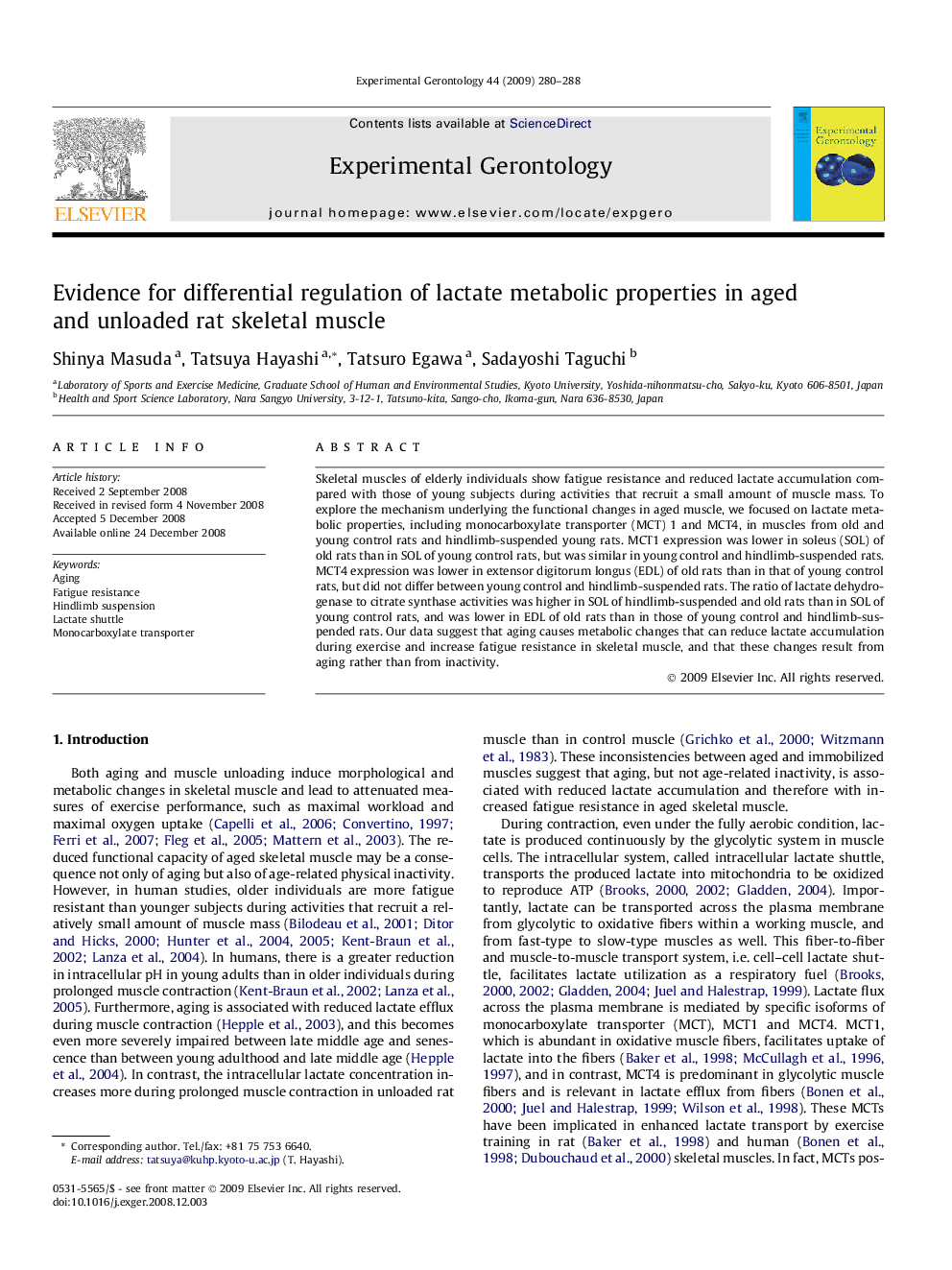| Article ID | Journal | Published Year | Pages | File Type |
|---|---|---|---|---|
| 1907429 | Experimental Gerontology | 2009 | 9 Pages |
Skeletal muscles of elderly individuals show fatigue resistance and reduced lactate accumulation compared with those of young subjects during activities that recruit a small amount of muscle mass. To explore the mechanism underlying the functional changes in aged muscle, we focused on lactate metabolic properties, including monocarboxylate transporter (MCT) 1 and MCT4, in muscles from old and young control rats and hindlimb-suspended young rats. MCT1 expression was lower in soleus (SOL) of old rats than in SOL of young control rats, but was similar in young control and hindlimb-suspended rats. MCT4 expression was lower in extensor digitorum longus (EDL) of old rats than in that of young control rats, but did not differ between young control and hindlimb-suspended rats. The ratio of lactate dehydrogenase to citrate synthase activities was higher in SOL of hindlimb-suspended and old rats than in SOL of young control rats, and was lower in EDL of old rats than in those of young control and hindlimb-suspended rats. Our data suggest that aging causes metabolic changes that can reduce lactate accumulation during exercise and increase fatigue resistance in skeletal muscle, and that these changes result from aging rather than from inactivity.
